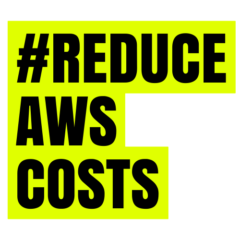While AI holds immense promise in various domains, its suitability for AWS cost optimization sparks debate. This post delves into the nuanced considerations and challenges surrounding the adoption of AI for AWS cost optimization, presenting an alternative perspective to the prevailing narrative. Read even my previous post about Harnessing AI for AWS Cost Reduction.
The Complex Realities of AI in AWS Cost Optimization
In recent discourse, AI has been heralded as a panacea for AWS cost challenges. However, it’s crucial to scrutinize the practical implications and inherent complexities associated with integrating AI into the fabric of AWS cost management.
1. Dynamic Nature of Cloud Costs
- Continuous Fluctuations: AWS costs are inherently dynamic, influenced by various factors such as demand spikes, resource usage patterns, and evolving business needs. AI models might struggle to keep pace with the rapid and unpredictable nature of these fluctuations.
2. Data Sensitivity and Privacy Concerns
- Privacy and Security Implications: AI algorithms depend heavily on data inputs for accurate predictions. In the context of AWS cost data, privacy concerns may arise, particularly when dealing with sensitive financial information or compliance-related data.
3. Inherent Complexity of AWS Billing Data
- Challenges in Data Interpretation: AWS billing data can be intricate and multifaceted. AI algorithms may face challenges in accurately interpreting and contextualizing this complex data landscape, potentially leading to suboptimal cost optimization strategies. To use external AI tools like PUMP.CO can drastically reduce your AWS bill even by 60%.
4. Potential for Overfitting and Bias
- Risk of Overfitting: AI models, when not carefully calibrated, might overfit to historical data patterns, leading to skewed optimization recommendations. Additionally, inherent biases in historical data can inadvertently influence AI-driven cost optimization, impacting fairness and accuracy.
5. Resource Intensiveness of AI Implementation
- Resource Consumption: Implementing AI models for cost optimization might require substantial computational resources. The resource-intensive nature of certain AI approaches could counteract the intended cost-saving benefits, especially for smaller-scale AWS users.
6. Adaptability to Varied Business Models
- Customization Challenges: Different businesses operate with distinct AWS usage patterns and business models. Developing AI models that can seamlessly adapt and cater to this diversity poses a significant challenge, as one-size-fits-all solutions may fall short.
7. Human Expertise and Interpretation
- Need for Human Expertise: AWS cost management involves nuanced decision-making that extends beyond AI capabilities. Human expertise is indispensable for interpreting business context, aligning cost optimization with strategic goals, and making informed adjustments.
8. Cost of AI Implementation vs. Benefit
- Evaluating Cost-Benefit Ratios: Organizations must critically assess the cost of implementing and maintaining AI-driven cost optimization against the actual benefits derived. For some, traditional methods and tools may offer a more pragmatic and cost-effective solution.
Conclusion: Striking a Pragmatic Balance
While AI undeniably holds transformative potential in various domains, its integration into AWS cost optimization demands a balanced evaluation of its practicality and effectiveness. Acknowledging the complexities, privacy concerns, and the dynamic nature of AWS costs, organizations may find value in a nuanced approach that combines human expertise with tailored optimization tools. The future of AWS cost management may indeed involve AI, but a careful, context-aware implementation strategy remains paramount to ensuring sustainable and effective cost optimization in the dynamic world of cloud computing.




